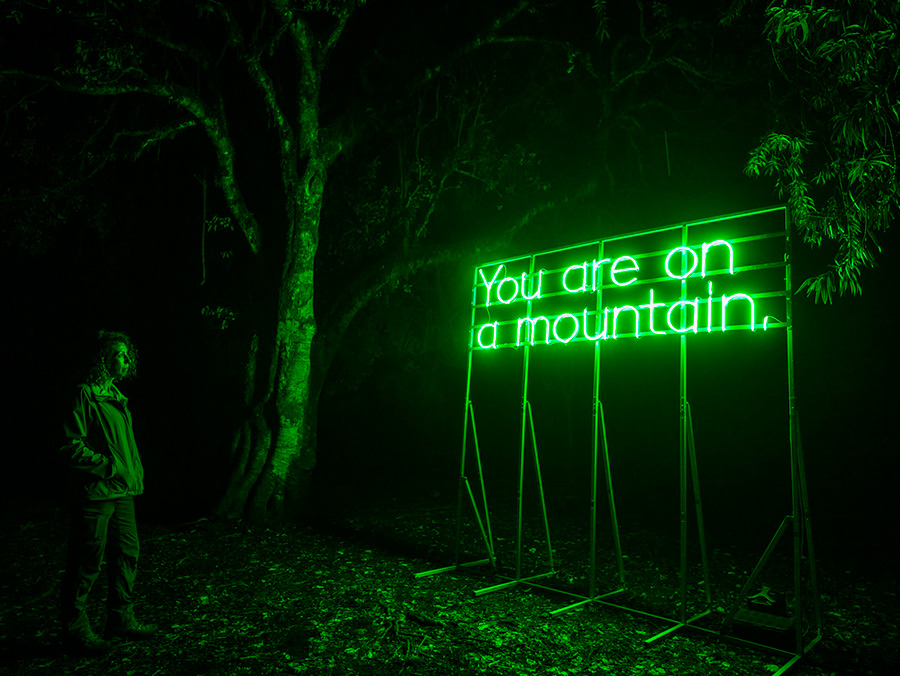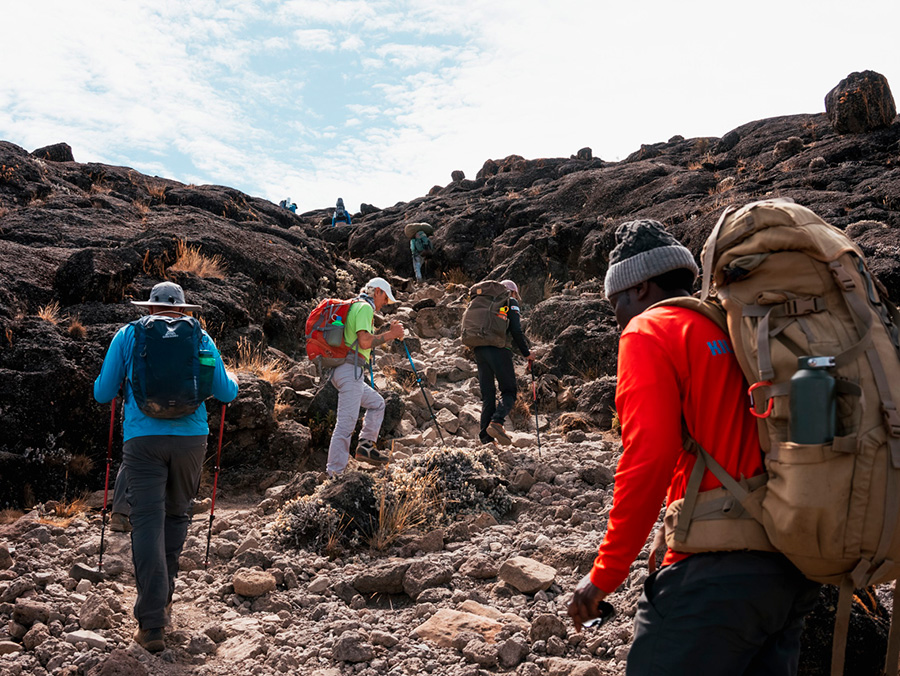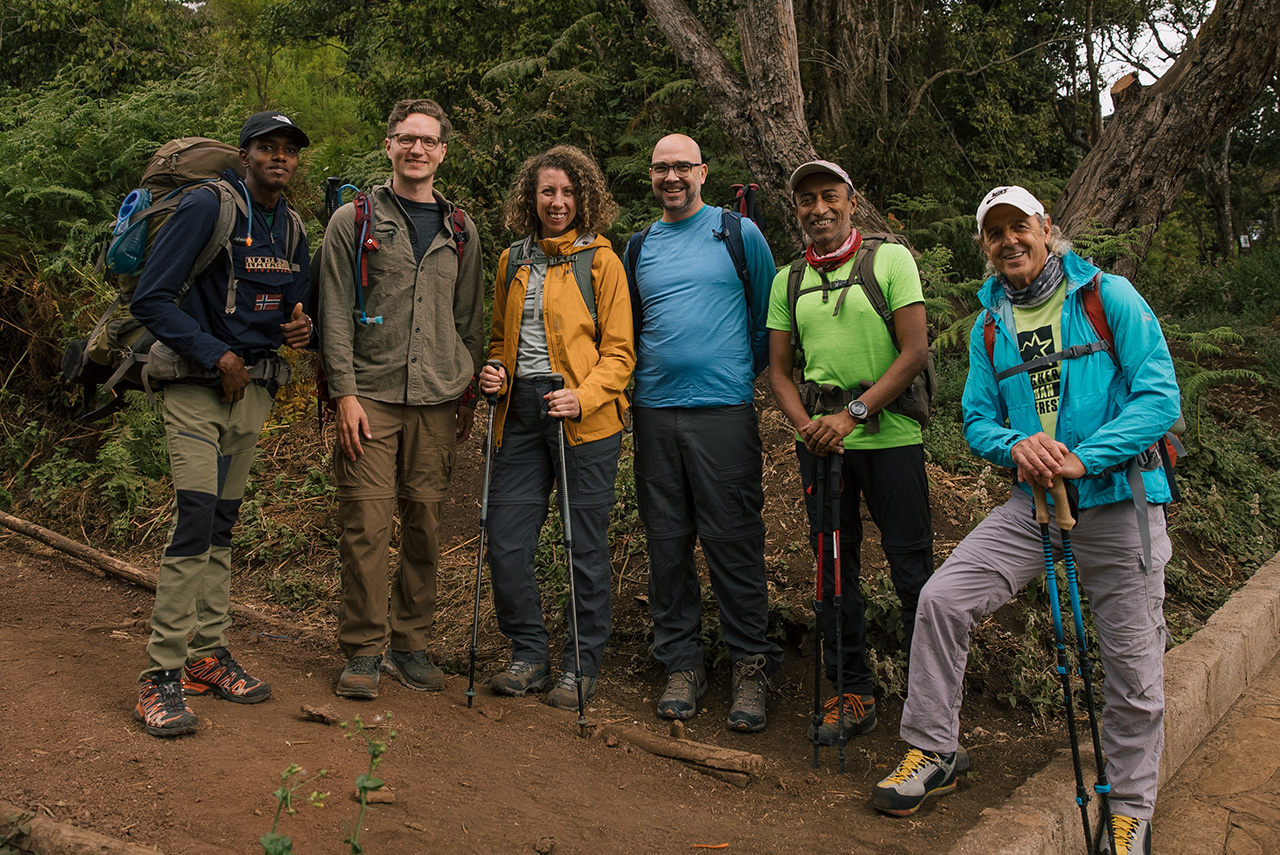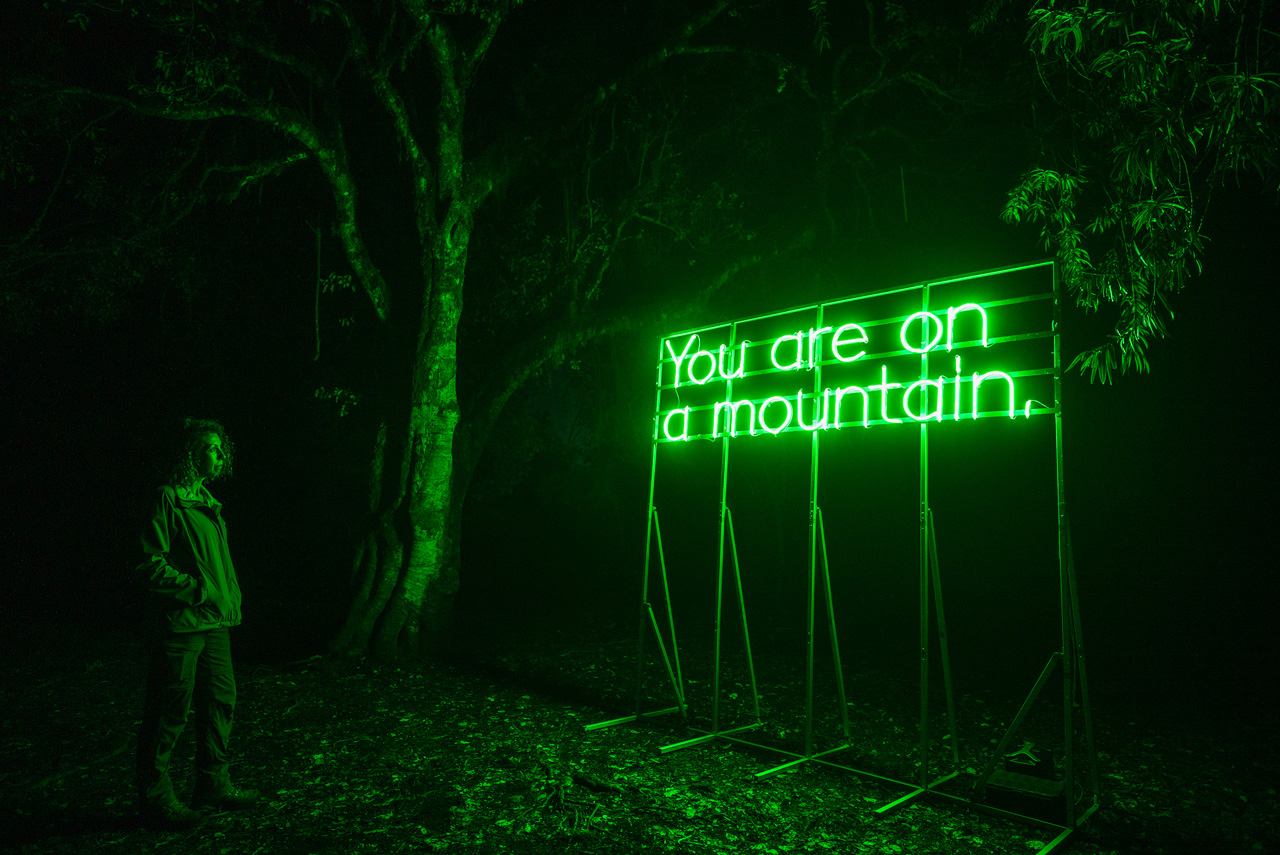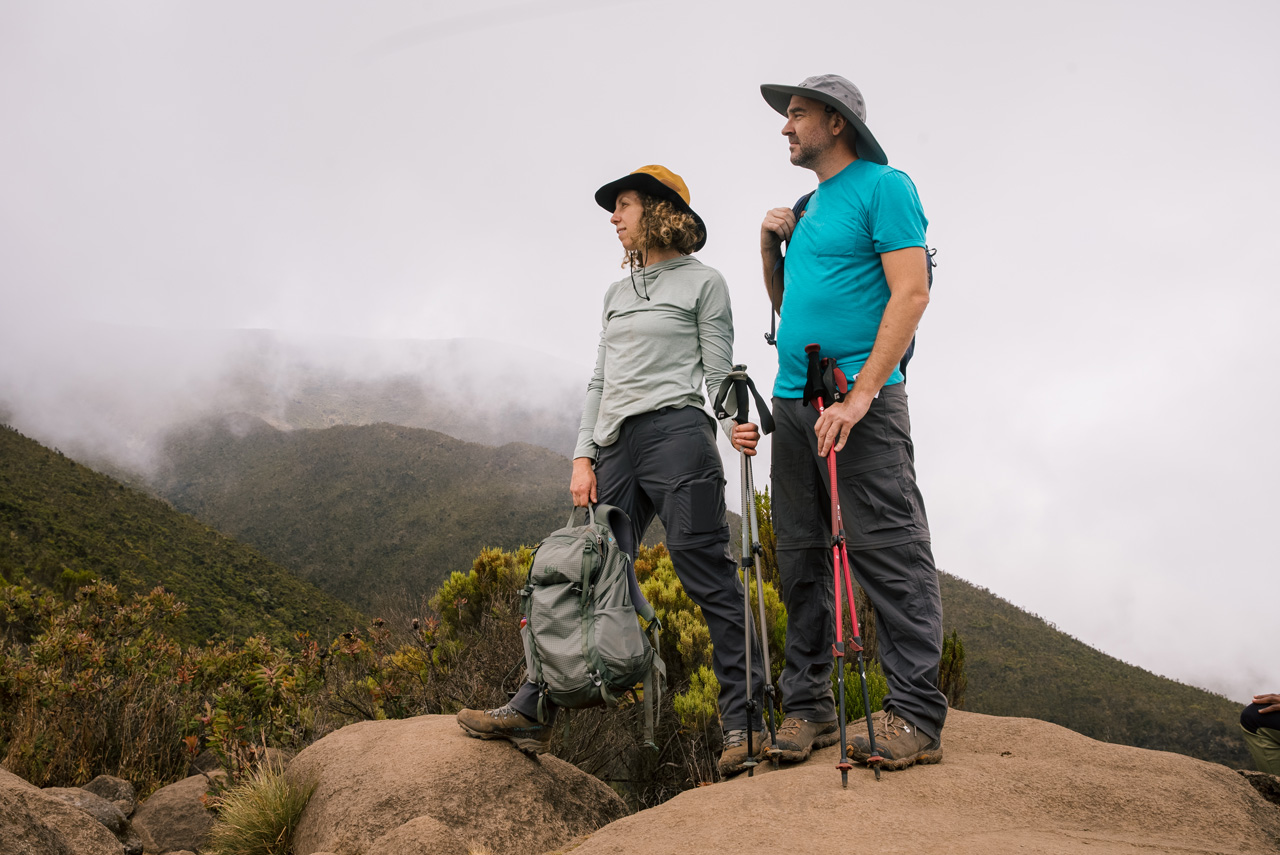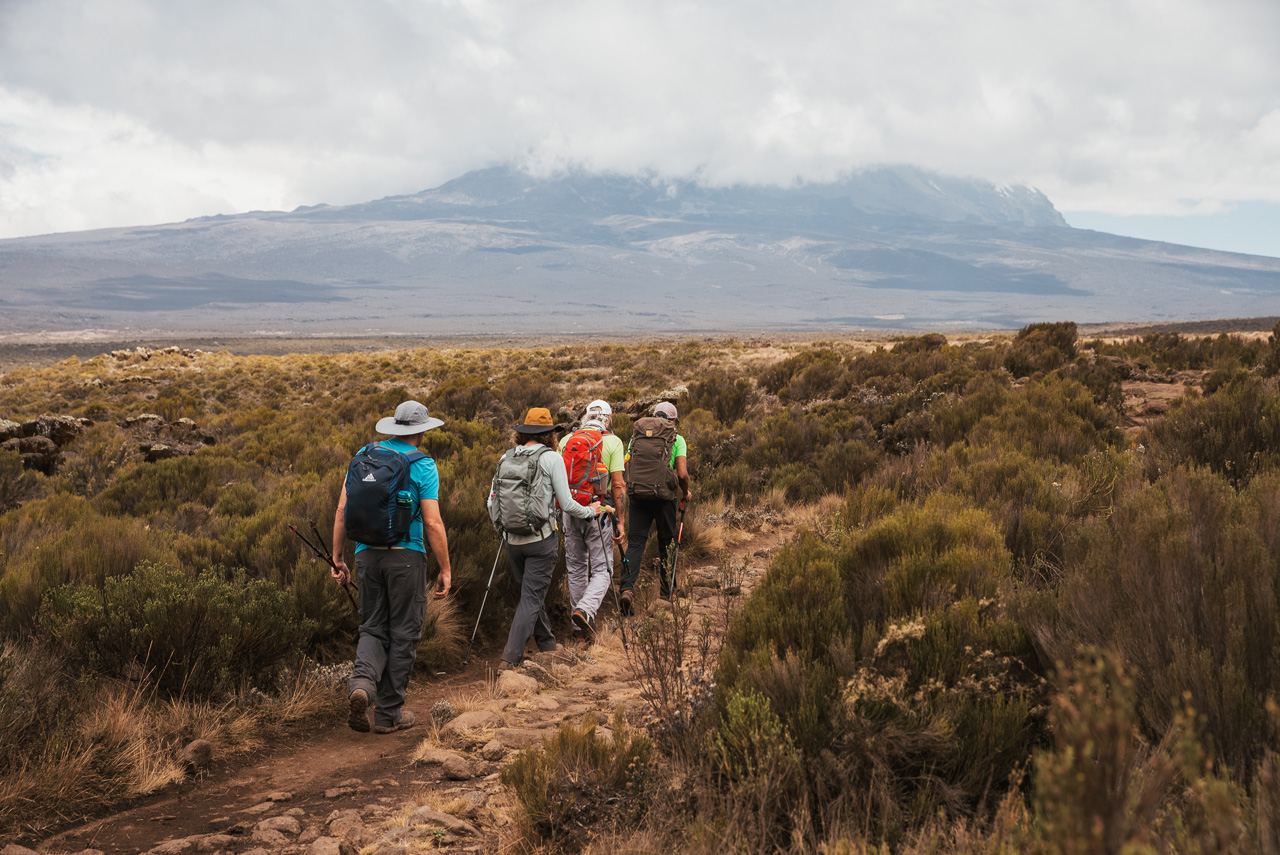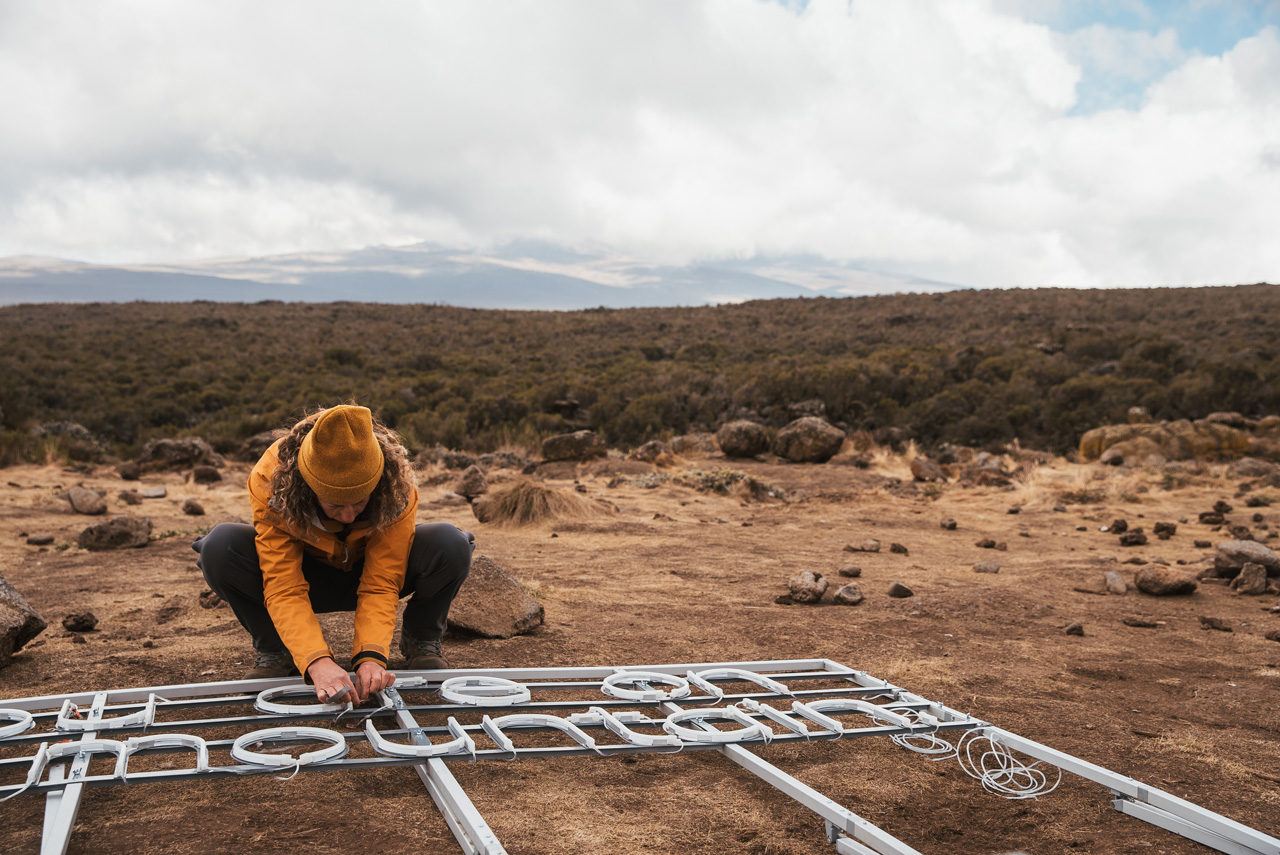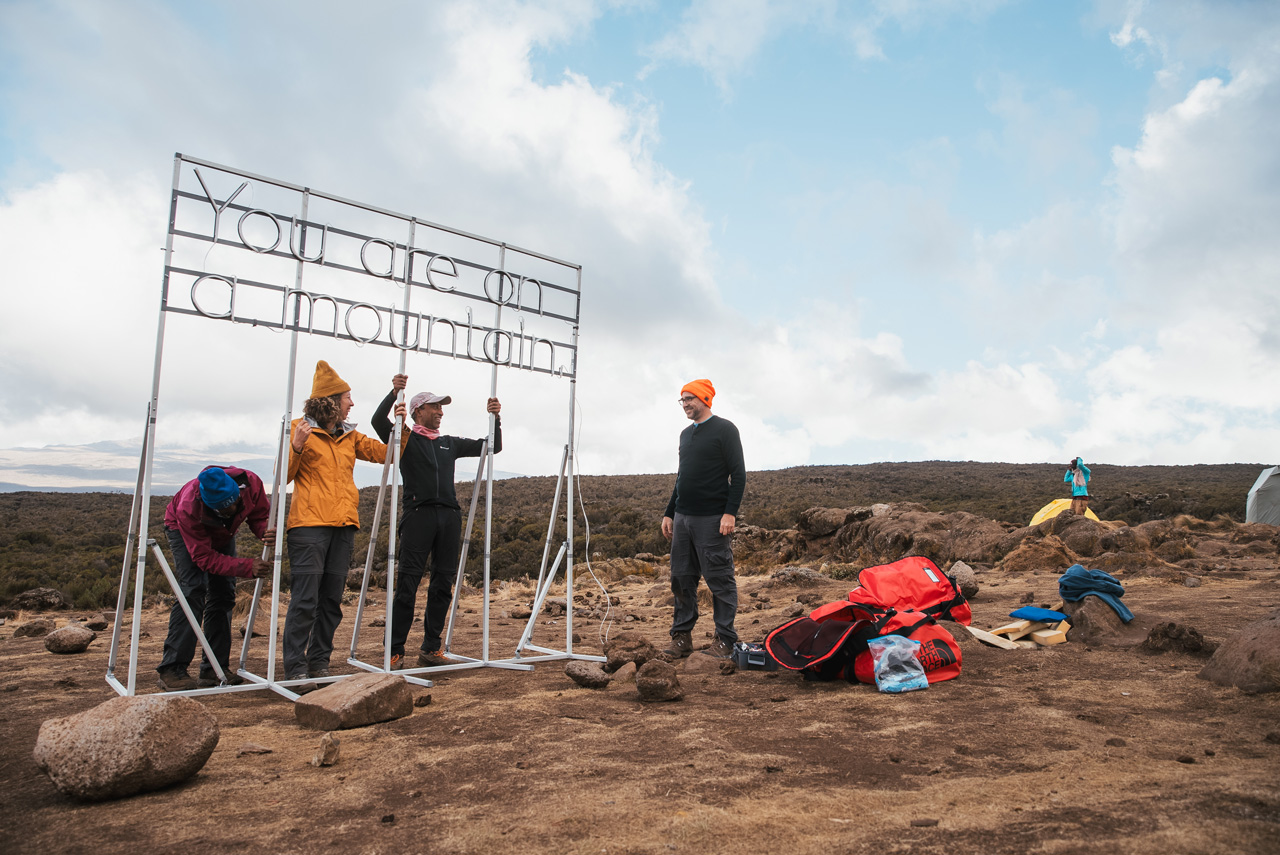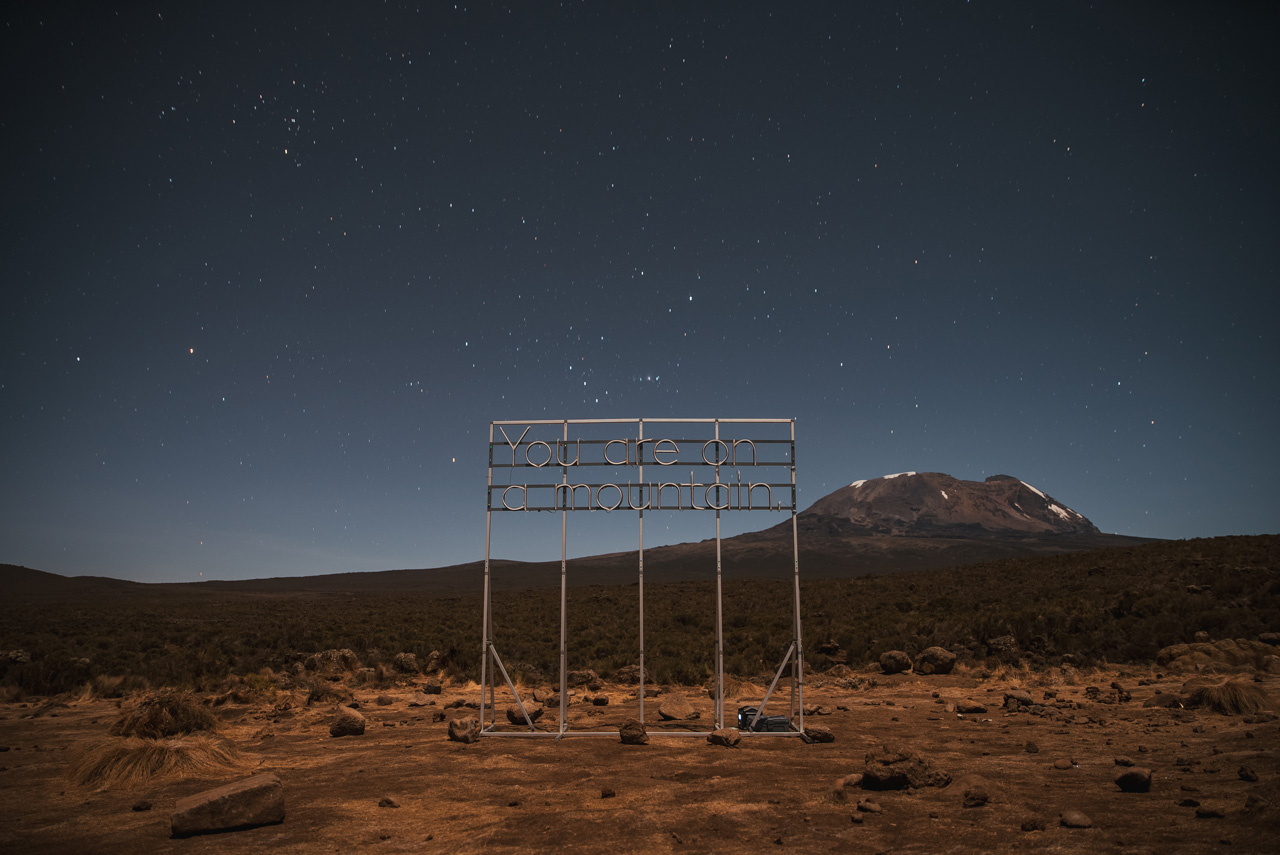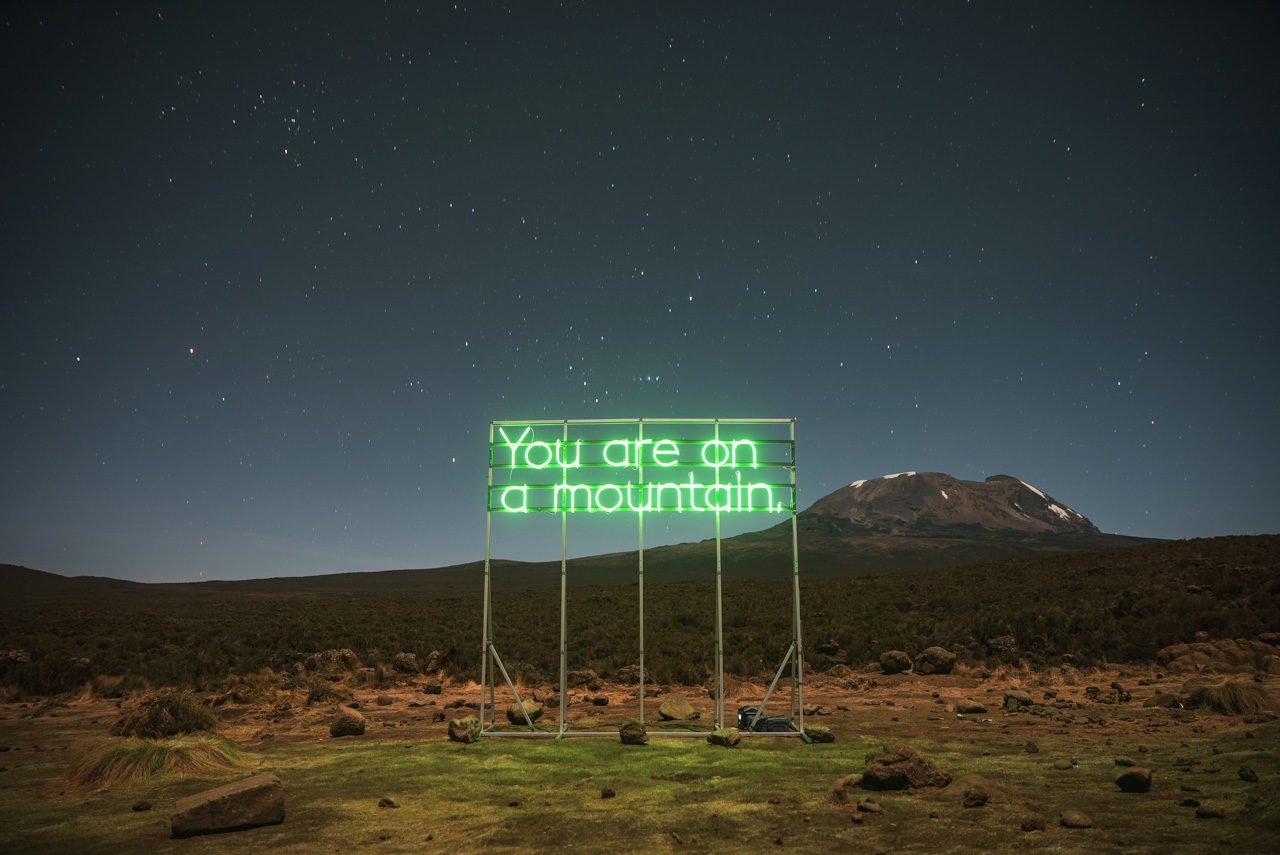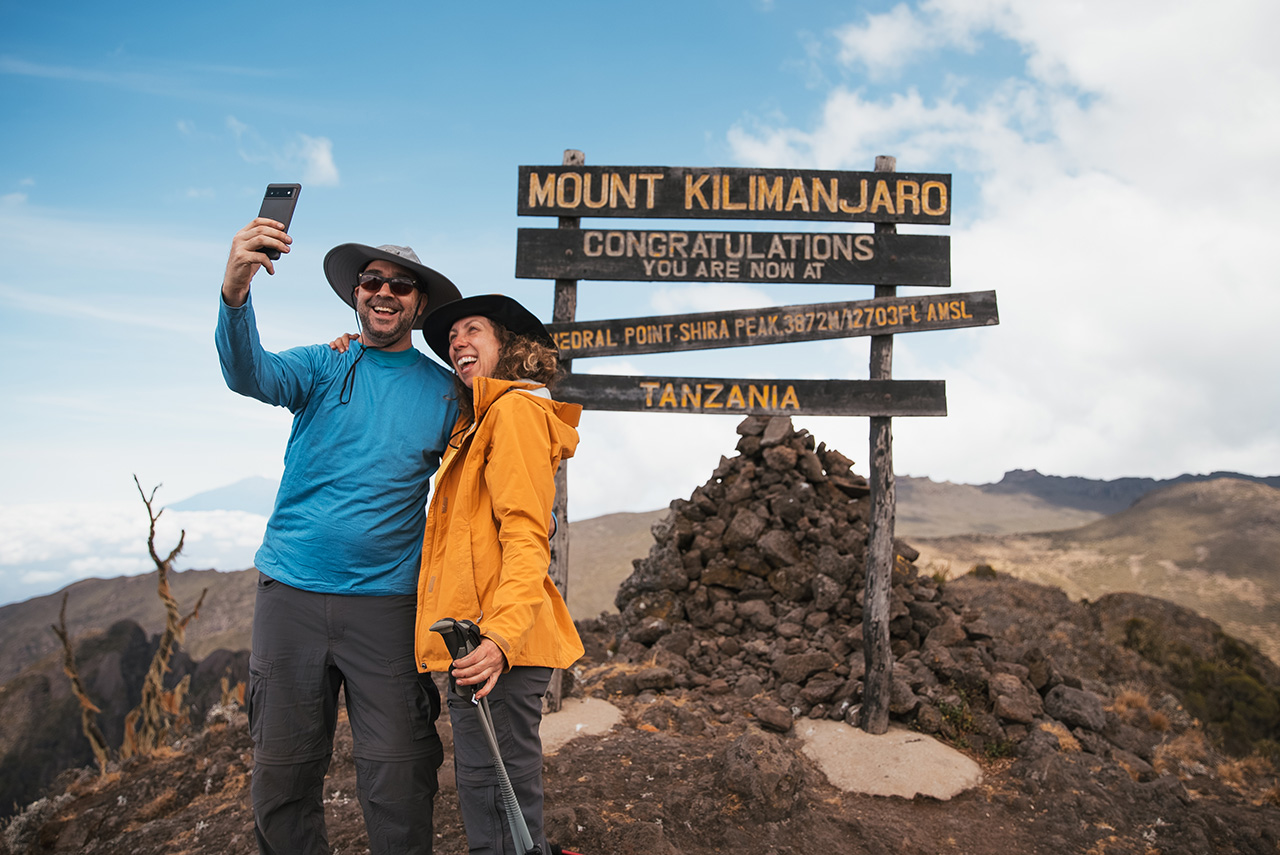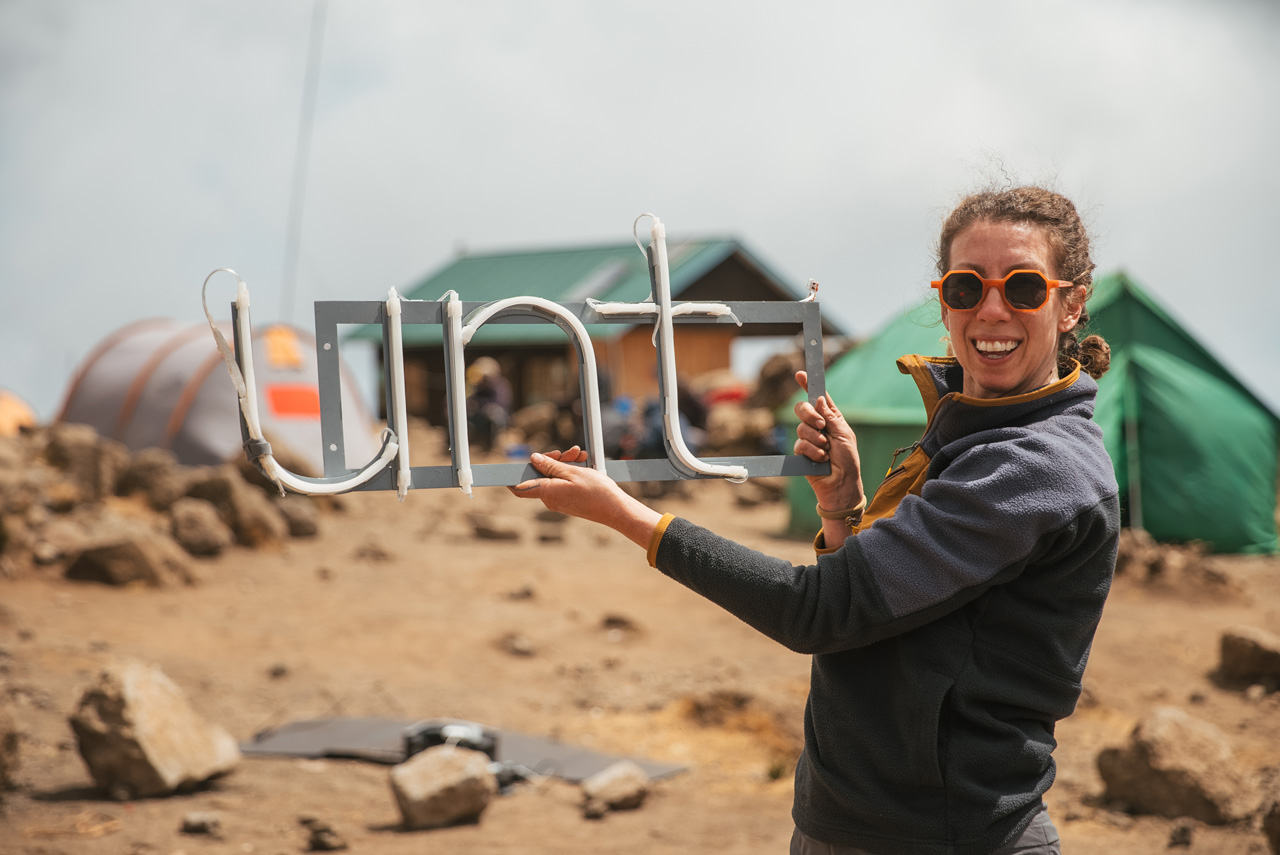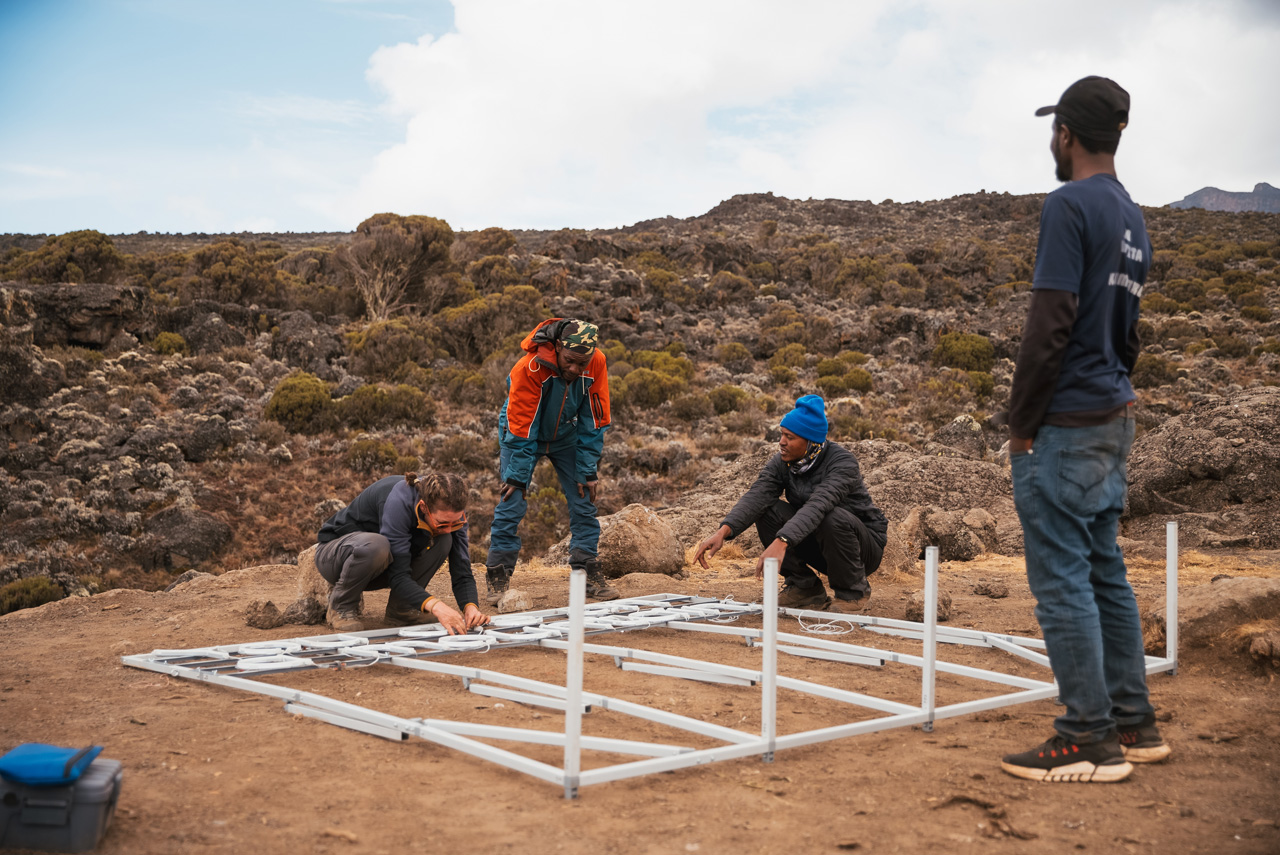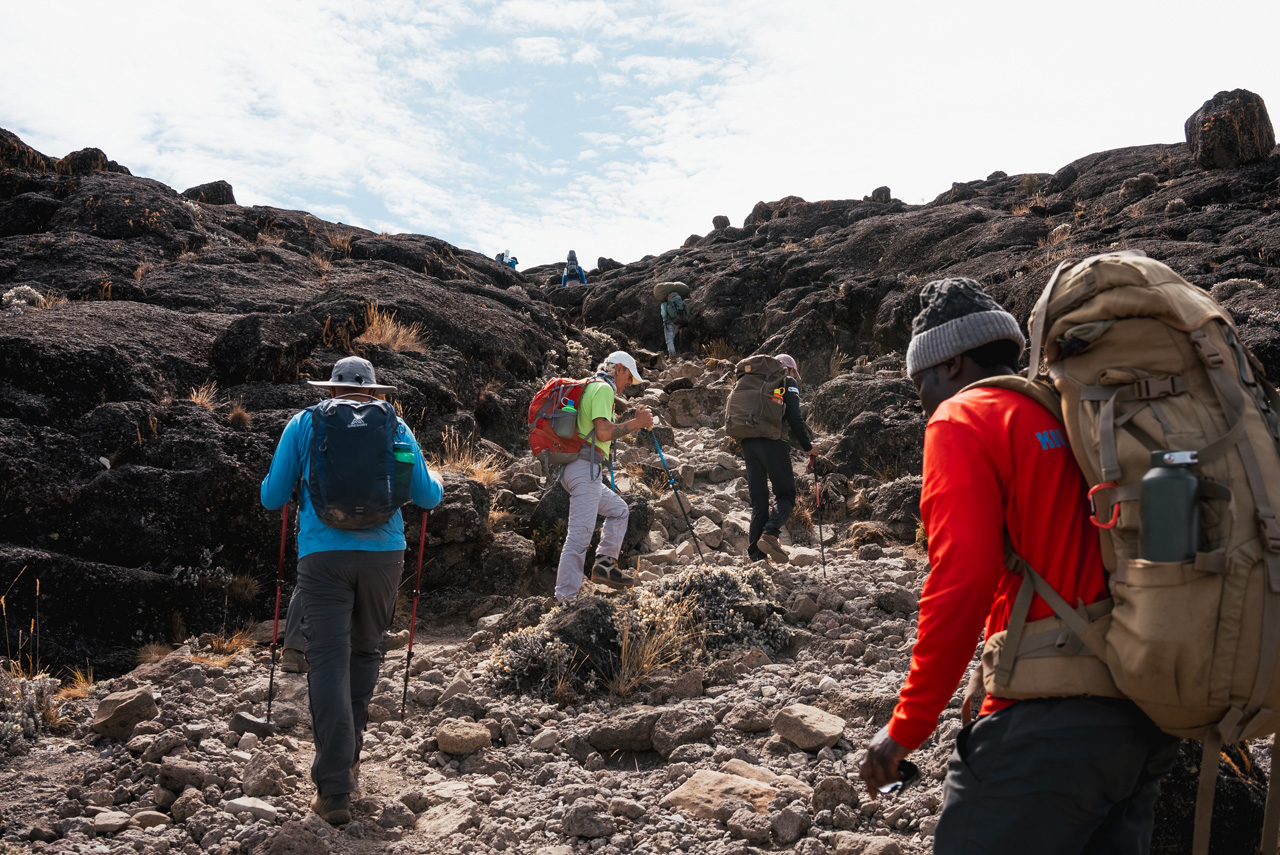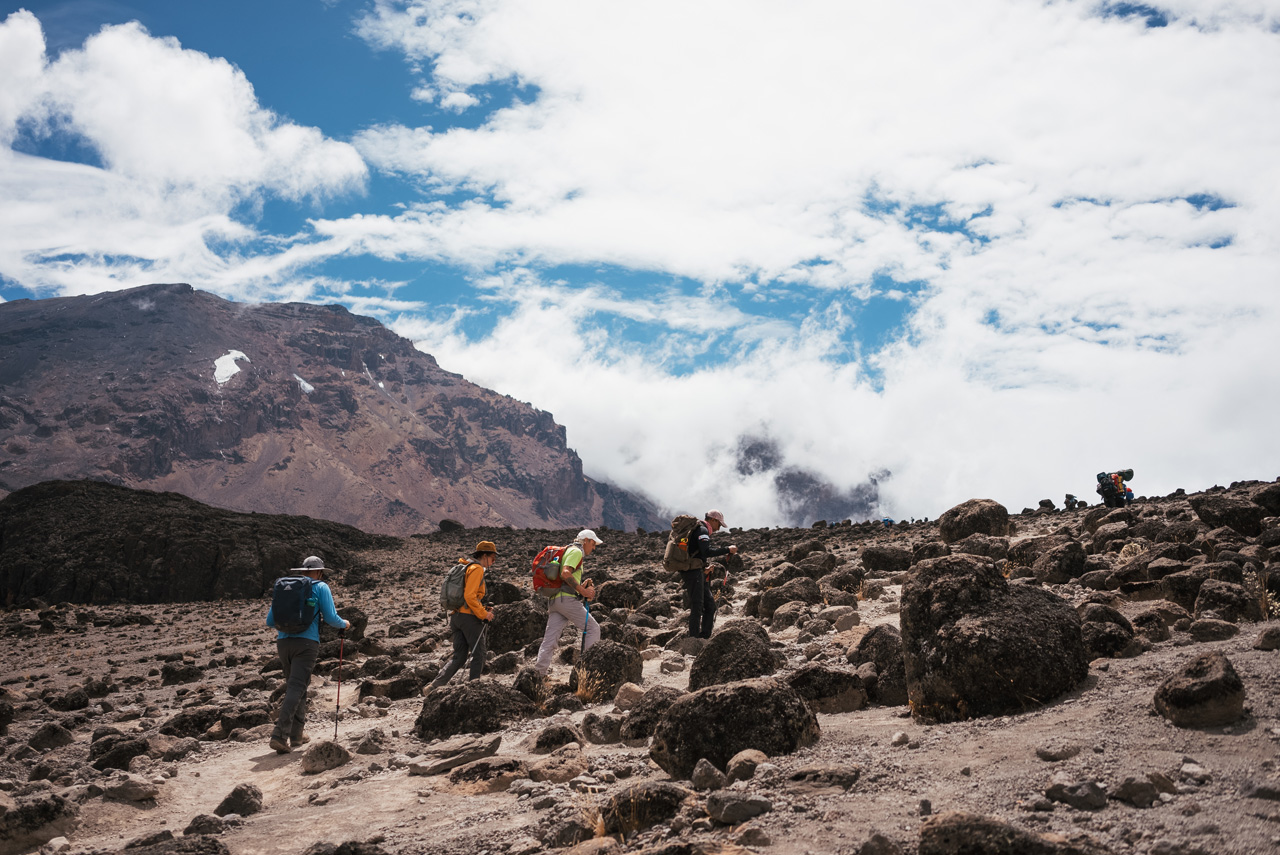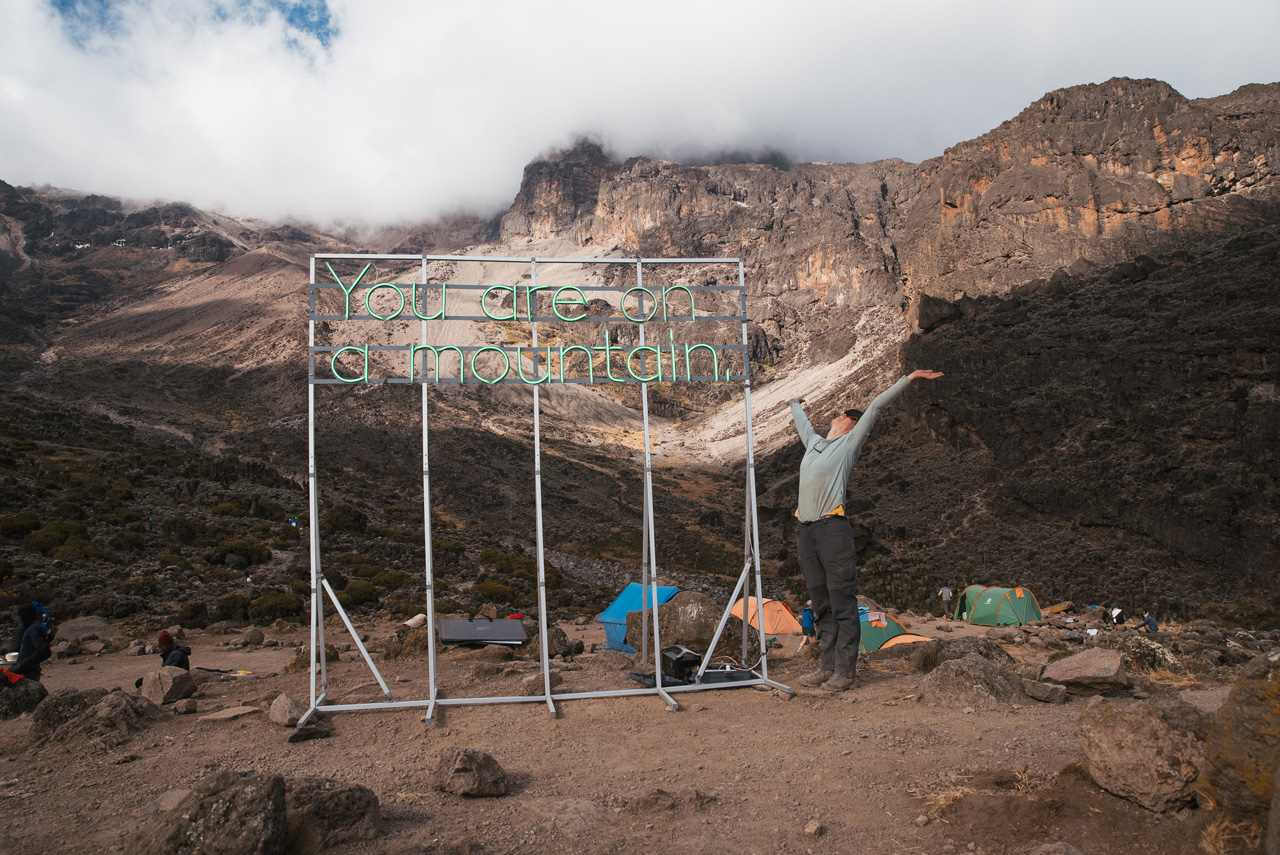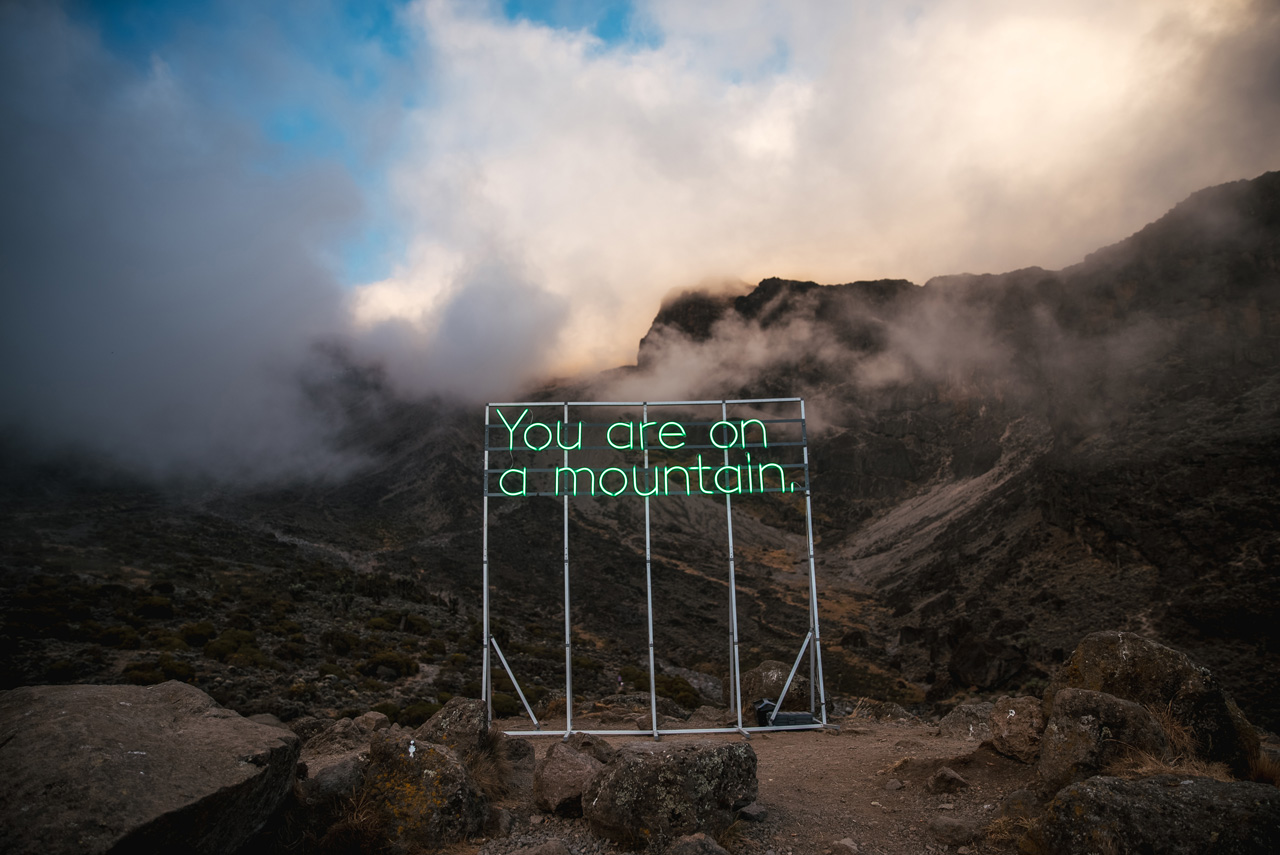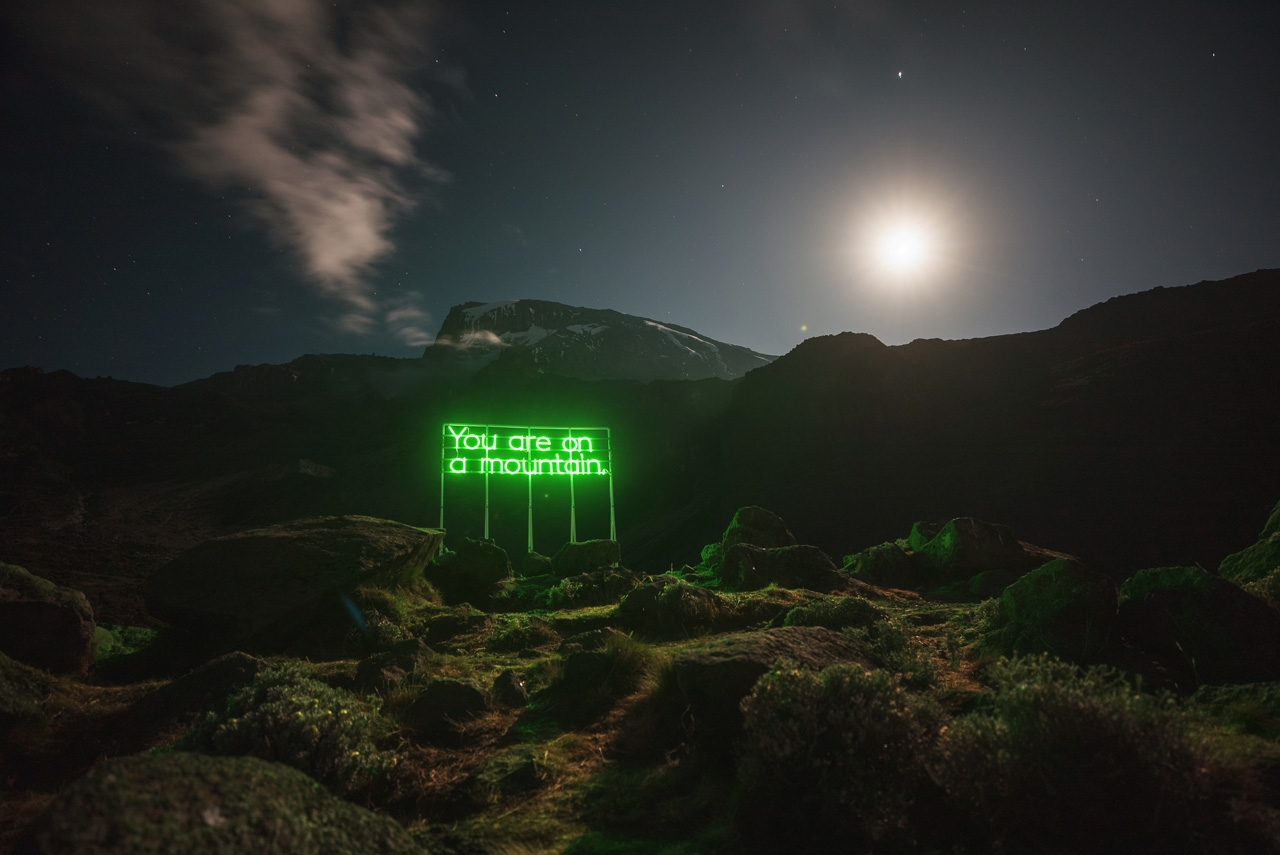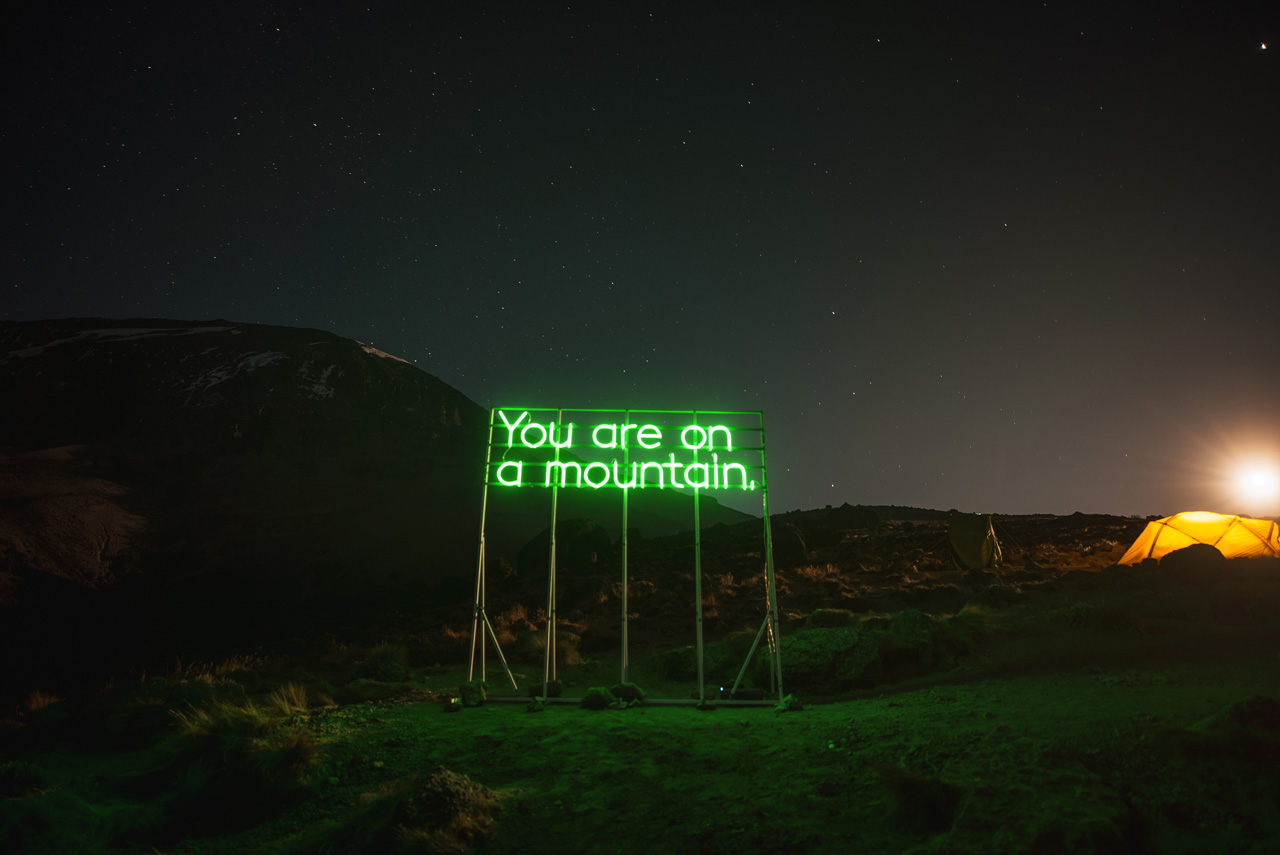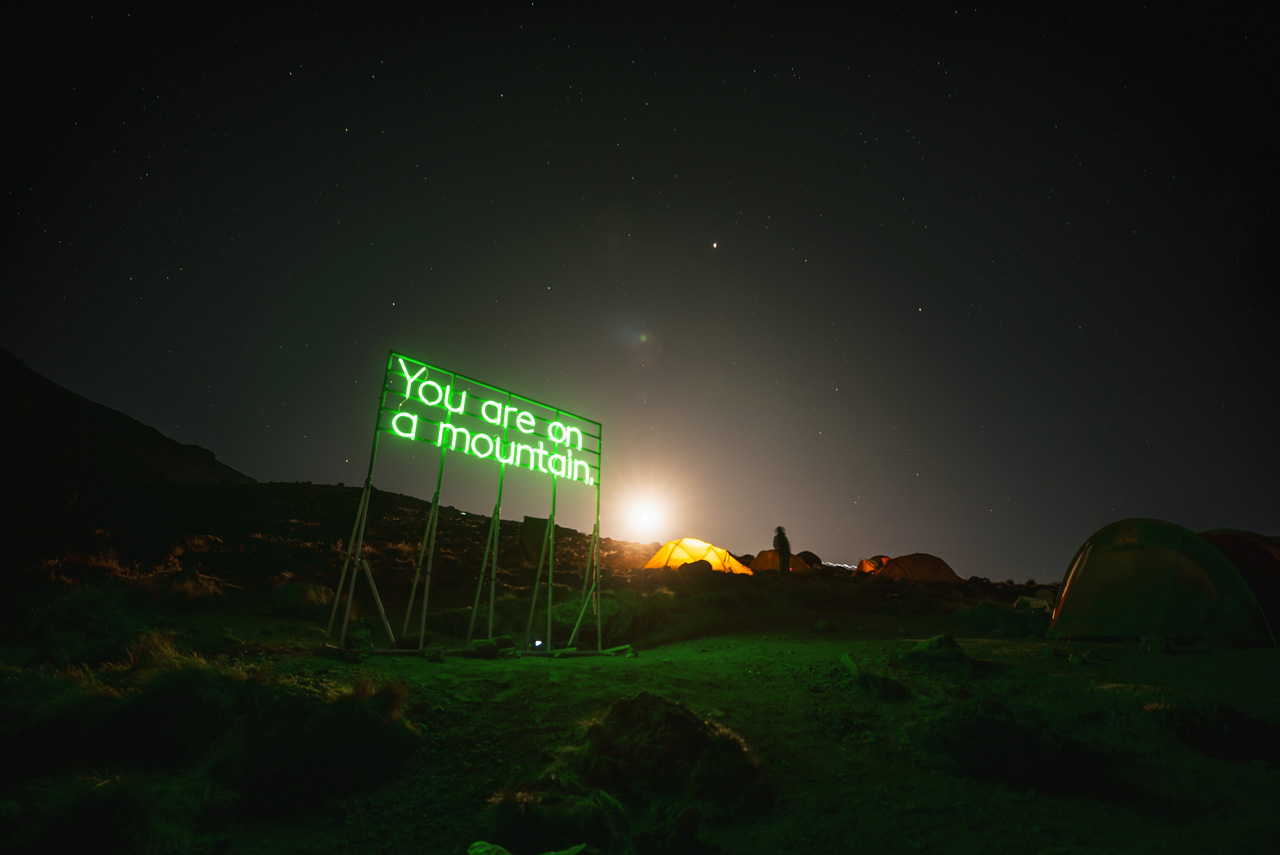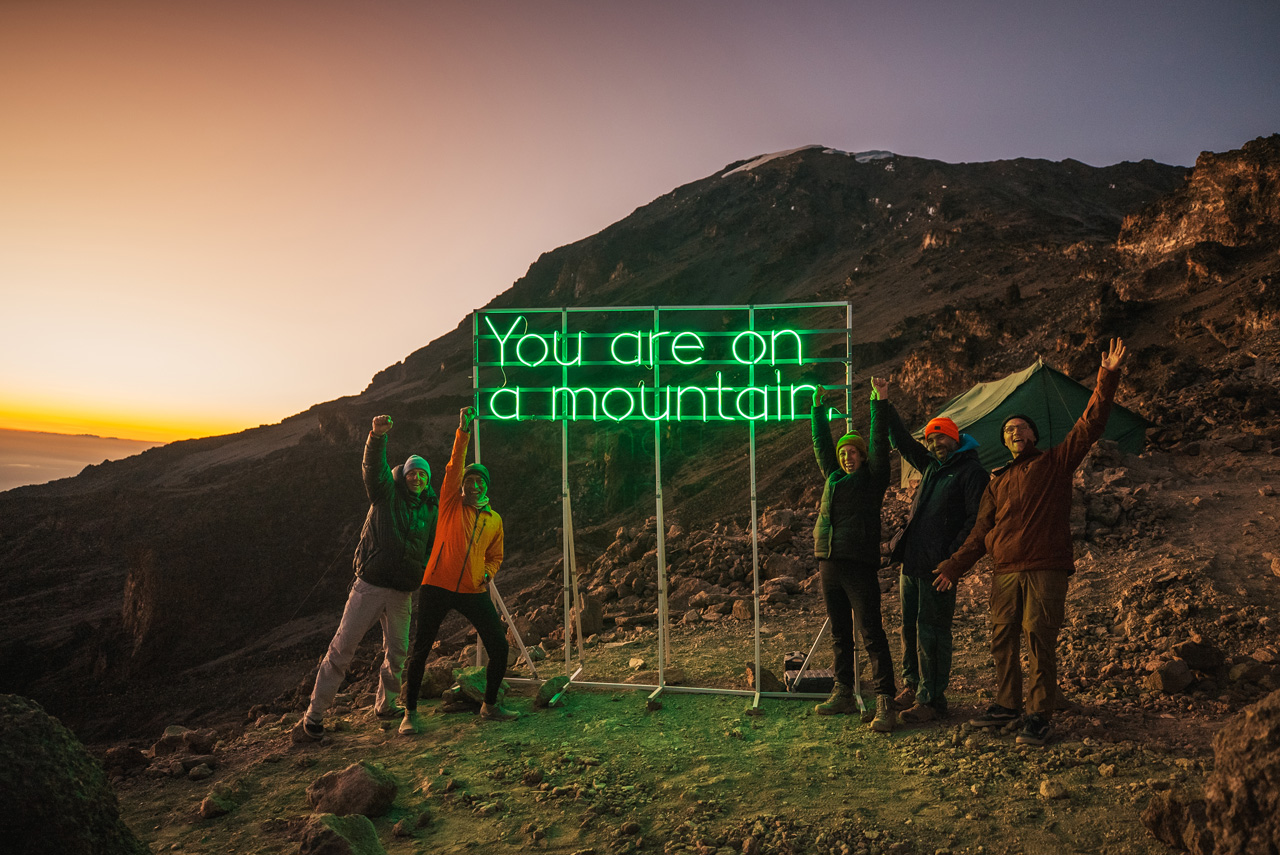"There were definitely some hurdles in the beginning with figuring out new materials
and processes, and where to source things from, but once everything came together,
it was quite a simple design," Eggert says.
But the meaning behind the sign is not simple by any means.
"My work is always about trying to peel back layers of understanding and getting to
a place where we can start to ask bigger, existential questions," Eggert says.
With "You are (on) a mountain," Eggert hopes those who experience it will start to
explore their own relationship with nature, hopefully developing more compassion in
the ways their actions impact the natural world around them.
To continue the project, Eggert will use photos and video with interviews from locals
captured during the Kilimanjaro trip as part of an upcoming exhibition. She also plans
to bring the artwork to other mountains in the future to raise awareness about the
importance of environmental stewardship.
"This project has evolved into a way of studying environmental personhood and indigenous
world views, and those perspectives are something I'd like to elevate," Eggert says.
"Many indigenous cultures see geographical features as living relatives, and I think
seeing our kinship with the land in a different way will mean we will be more likely
to protect and preserve our environment rather than exploit and pollute it."

